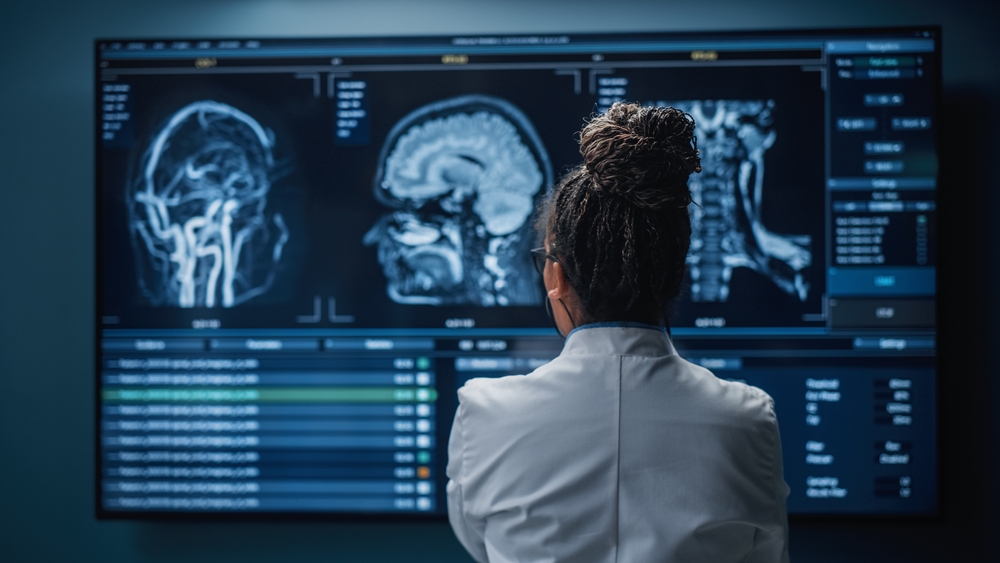Recovering from a traumatic brain injury (TBI) is often a long and complex journey, marked by challenges with cognition, mood, and motor function. As medical science advances, new treatments are offering hope. One of the most promising is Transcranial Magnetic Stimulation (TMS) for TBI. This non-invasive procedure uses a specialized transcranial magnetic stimulation device to modulate brain activity, potentially improving symptoms that have not responded to traditional therapies. This innovative approach is becoming a significant component of modern traumatic brain injury care, offering a new path forward for many individuals. Reach out today to learn more about how we can help you enhance your golden years.
What is transcranial magnetic stimulation?
Transcranial Magnetic Stimulation, or TMS, is a procedure that uses magnetic fields to stimulate nerve cells in the brain. Unlike more invasive treatments, TMS is done without surgery or anesthesia. During a session, a small electromagnetic coil is placed against the scalp near the forehead. This coil, part of the transcranial magnetic stimulation device, delivers painless magnetic pulses that pass through the skull and into the brain. These pulses generate small electrical currents that can either excite or inhibit neurons in targeted areas, helping to restore more normal brain function.
While TMS is widely known and FDA-approved for treating major depressive disorder, researchers are actively exploring its potential for a range of other neurological and psychiatric conditions, including those resulting from a TBI.
Applying Transcranial Magnetic Stimulation (TMS) for TBI
A traumatic brain injury disrupts the brain’s delicate neural circuits. This can lead to a host of persistent symptoms, such as depression, anxiety, memory problems, chronic pain, and motor deficits. Traditional care management for TBI often involves a mix of physical therapy, occupational therapy, speech therapy, and medication. However, these methods are not always enough to resolve all symptoms.
TMS offers a new way to directly target the affected brain regions. By applying repetitive pulses (known as rTMS), clinicians can help “rewire” or normalize brain networks that were damaged by the injury.
How TMS Aims to Help TBI Symptoms
- Post-TBI Depression: Depression is one of the most common and debilitating consequences of a TBI. By stimulating the dorsolateral prefrontal cortex—a brain region involved in mood regulation—TMS can help alleviate depressive symptoms that are often resistant to medication.
- Cognitive Function: Many individuals with TBI struggle with memory, attention, and executive function. Studies are investigating how TMS can be used to enhance neural plasticity and improve cognitive performance by targeting specific networks associated with these functions.
- Motor Recovery: For individuals with motor deficits after a TBI, TMS applied to the motor cortex may help improve muscle control and coordination. When combined with physical therapy, it can potentially accelerate recovery.
- Chronic Pain: Headaches and other forms of chronic pain are common after a brain injury. TMS is being explored as a non-pharmacological option to modulate the brain’s pain-processing pathways and reduce discomfort.
What to Expect During a TMS Session
The TMS procedure is straightforward and conducted in an outpatient setting. Patients sit comfortably in a chair while a technician positions the magnetic coil on their head.
- The device delivers a series of rapid magnetic pulses. Patients will hear a clicking sound and may feel a tapping sensation on their scalp.
- Each session typically lasts between 20 to 40 minutes.
- A full course of treatment usually involves daily sessions, five days a week, for four to six weeks.
TMS is generally well-tolerated. The most common side effects are mild and include scalp discomfort or headaches, which usually fade shortly after the session. It is a non-systemic treatment, meaning it does not have the side effects associated with many medications used in traumatic brain injury care.
The Future of Care Management for TBI
While TMS for TBI is still considered an emerging treatment, the evidence is growing. Clinical trials continue to explore the most effective protocols—including the optimal intensity, frequency, and location of stimulation—for various TBI-related symptoms. As a key part of progressive care management for TBI, it represents a shift toward treatments that directly address the neurological roots of the injury.
This technology offers a personalized approach, allowing clinicians to tailor treatment to an individual’s unique pattern of brain injury and symptoms. It provides a beacon of hope for those who feel they have exhausted all other options.
Is TMS Right for You?
If you or a loved one is living with the lasting effects of a traumatic brain injury and has not found relief with conventional treatments, TMS may be an option worth exploring. The first step is to consult with a neurologist or a psychiatrist who specializes in both TBI and neuromodulation techniques like TMS. They can conduct a thorough evaluation to determine if you are a suitable candidate.
Do not let the challenges of a TBI define your future. Ask your healthcare provider about how a Transcranial Magnetic Stimulation Device might fit into your recovery plan and take the next step toward reclaiming your quality of life. If you or a loved one is a TBI survivor, exploring the NHTD program could be the key to unlocking a better future. Feel free to call HouseCalls Home Care at 718-922-9200 if you or a loved one requires compassionate and competent home care services. You can also send an email to us at info@HouseCallshc.org for more information. Our goal is to help you find the best support for your needs. Alternatively, you can register your information here https://yuz88hfiyh7.typeform.com/to/E5thuv5G?typeform-source=statics.teams.cdn.office.net, and we will get back to you.




